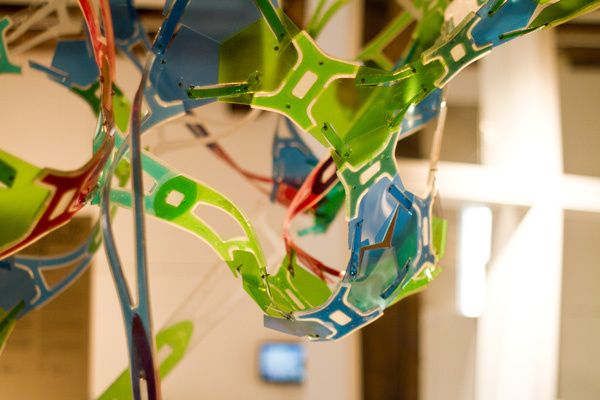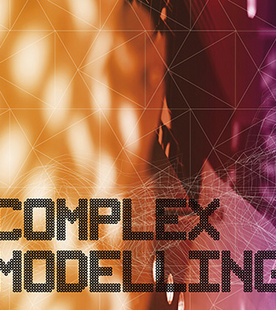Scatterings

A research project by CITA (conducted as part of the PhD research by Jacob Riiber )
The project Scatterings explores how the principles of self-organizing systems can be applied as a means
to distribute component based material structures. This is hypothesized to allow architecture access to a
novel non-linear complexity permitting a more adaptive and reactive design space.
The project departs from a conceptual framework addressing the idea of composite materials; here specifically the idea of combining individual sheets of acrylic plate material by casting them inside a frame of silicone rubber. These components where within the project distributed within a bespoke digital design space in two steps. Firstly, components where distributed as a 2 dimensional diagrammatic agent based system in which different kinds of relationships between components where formed. Secondly, as a 3 dimensional simulation determining the behavior of self-organizing structure under gravity. The initial distribution was prepare for this simulation by distributing the components onto a circular area on which the placement of folding and pulling operations would naturally force the structure out of its 2
dimensionality.
The project was finalized as a 1:1 demonstrator as part of an exhibition for DAC (Danish Architecture Center), where a structure consisting of several hundred individually cast elements occupied a vertical space within the building. In this context the individual components where developed with colored acrylic plates in order to apply functionality to the structure inspired by the concept of stained glass windows: coloring the exhibition space by projecting light through the structure. Placing the system within a concrete context like this allowed us to examine the accuracy of the simulation and the possibilities, as well as potential disadvantages, of using an agent based approach to design.
Collaborators
Jacob Riiber, Andrius Vilcinskas, Martin Tamke, Henrik Leander Evers, Malene Hvidt, Hans Bærholm, Kristjana Sigurdardottir.


![simulation-[0114-2593]](https://kglakademi.dk/sites/default/files/styles/media/public/media-vimeo/58701838.jpg?itok=yO6YlVYa)
![agents-[0030-5054]](https://kglakademi.dk/sites/default/files/styles/media/public/media-vimeo/58699949.jpg?itok=8l-dcYk_)



